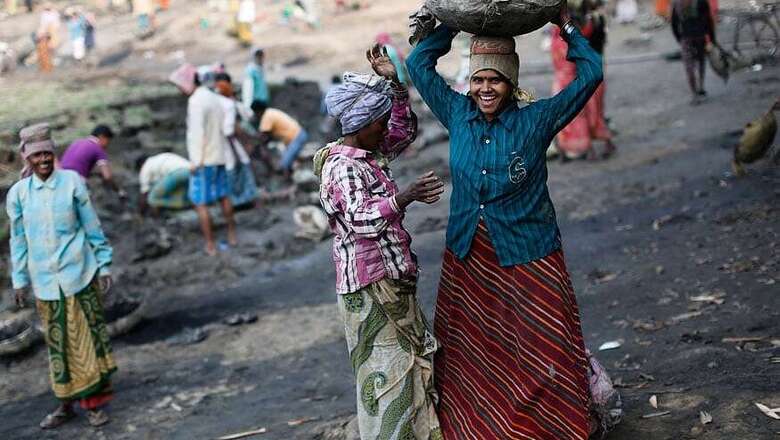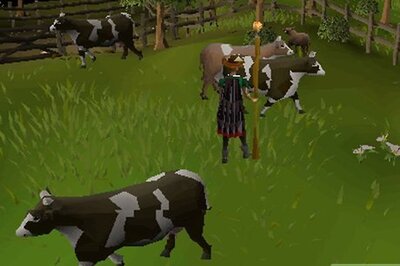
views
New Delhi: Prime Minister Narendra Modi, in 2015, referred to it as a “living monument” of the failure of the previous UPA regime, yet the flagship job guarantee programme MGNREGA figured majorly in Arun Jaitley’s Budget as he gave it one of its biggest allocations ever.
On closer scrutiny, the outlay for MGNREGA in Budget 2016-17 at Rs 48,000 crore is pretty much the same as the revised estimate for the programme in the previous fiscal (Rs 47,499 crore as against the budgeted Rs 38,500 crore). That doesn’t take away the fact that the scheme now firmly has the Modi government’s stamp of approval.
So what gives?
Abhijeet Sen, one of India’s most respected agricultural economists, said the fact the government ended up spending more money on MGNREGA than it originally budgeted and that a matching figure has been provisioned for the next fiscal could mean the government is concerned the adverse effects of demonetisation on rural economy might continue.
Perhaps, MGNREGA is the answer for lifting sentiments in the rural economy.
Abhijit Banerjee, co-author of Poor Economics and one of the founders of the Abdul Latif Jameel Poverty Action Lab (J-PAL), had recently told News18 in an interview that post-demonetisation, the MGNREGA would be one tool in the hand of the government to do “something to stabilise demand”.
Pramathesh Ambasta, member of the Central Employment Guarantee Council (a government-appointed watchdog of the employment guarantee scheme) said despite the criticism that has come its way, MGNREGA has stood the “test of time” and emerged important for the rural poor.
Jaitley was forthcoming with a few details in his speech. The funds set aside last year for ponds under MGNREGA, he said, had been fully achieved and, by March 2017, 10 lakh ponds will have been built against a target of five lakh. An additional 5 lakh ponds will be taken up for 2017-18. The budget also pointed out that participation of women went up to 55 percent from less than 48 percent.
Activist Nikhil Dey of the Mazdoor Kishan Shakti Sangthan, who has worked extensively on the programme, said, "The talk around NREGA has completely changed in the past two years. The government has realised that with drought, with demonetisation and with rural distress they have nothing else for people, which is why this highest-ever allocation." He did caution on the lack of money on the ground. "Two months of the current year remain which generally have high employment rates," said Dey, adding, "by the government's own estimates these will cost 9000 crore. However, 22 states, including Uttar Pradesh and Punjab, have a negative balance right now."
To Ambasta, the budgetary allocation is good news. However, he did raise the question of what implementation or governance reforms will accompany the allocation: how well is the money spent well on the poor, how is the programme delivered? He felt that though MGNREGA has generated employment, if implemented well with planning and human resources, it could create sustainable livelihoods that, in turn, will render the need for MGNREGA redundant in the future. This, by creating sustainable assets through drought-proofing or water-proofing which will have an accelerator effect on rural incomes as more land becomes arable and yields go up.
While both Sen and Ambasta agreed that labour was going back to rural areas, the latter said that rural India needed such an allocation, due to farm distress.
“It’s basically a normal budget,” said Sen, adding, “there are no new schemes. This isn’t necessarily bad; but based on these amounts, it’s hard to discover a sense of direction the government is taking.” Many of the agriculture-related announcements were similar to the PM’s December 31st speech, and much of those weren’t even budgetary matters but those decided by banks. For example, doubling the irrigation fund from Rs 20,000 crore to Rs 40,000 crore and setting up the micro-irrigation fund of Rs 5000 crore under National Bank for Agriculture and Rural Development (NABARD). “And there is no money transfer budgeted for NABARD this year,” he added.
Roads featured prominently as Jaitley announced the pace of construction of Pradhan Mantri Gram Sadak Yojana roads accelerated to 133 km roads per day in 2016-17, against an average of 73 km during 2011-2014. The scheme, given a total of Rs 27000 crore including the states and the centre’s share, will also connect with 100 blocks affected by left wing extremism affected areas by 2019.
The Pradhan Mantri Awaas Yojana – Gramin got a boost, going up from Rs 15,000 crores to Rs 23,000, with a target to complete a crore houses by 2019 for the homeless and people living in kutcha houses. The budget reaffirmed the 100 percent village electrification target of 1 May 2018, and said the sanitation coverage in rural India had gone up from 42 percent in Oct 2014 to about 60 percent now.
Under a sub mission of the National Rural Drinking Water Programme (NRDWP), safe drinking water to over 28,000 arsenic and fluoride affected habitations will be provided in the next four years. Arsenic poisoning has, over the years, affected about 30 districts of Uttar Pradesh, due for elections in a few days.



















Comments
0 comment